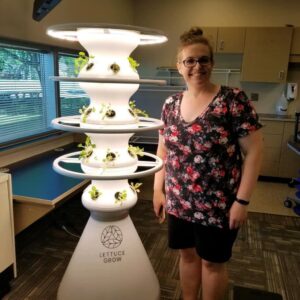Project Overview
YENC23-197
Project Type: Youth Educator
Funds awarded in 2023: $6,000.00
Projected End Date: 01/31/2025
Grant Recipient:
Harvest Hope Farm
Region: North Central
State: Minnesota
Project Manager:
Lynn Kotrba
Harvest Hope Farm
Commodities
Not commodity specific
Practices
- Crop Production: pollinator habitat
- Education and Training: youth education
- Production Systems: hydroponics
- Soil Management: composting
- Sustainable Communities: community services, partnerships, quality of life, urban agriculture
Proposal abstract:
Farm Camp on Wheels will teach youth in summer school and Boys and Girls Club Programs about sustainable agriculture and environmental stewardship on a weekly basis from early June to mid-August 2023 through the following methods:
- Use of Hydroponic Gardens in the classrooms - sampling and cooking
- STEM Projects revolving around the environment - including but not limited to: worms, bug larvae, composting
- One field day at Harvest Hope Farm to meet and learn about the animals, visit the pollinator garden and see the larger gardens in progress
- Forestry, food service and farming speakers for each classroom.
Project objectives from proposal:
- Educate 100 youth about the importance of sustainable food practices and environmental stewardship through the use of hydroponic gardens and a field day at Harvest Hope Farm.
- Educate 15 preschool youth and their parents about the importance of exposing youth, at young ages, to healthy eating practices and how this can influence food choices as they grow up. One preschool will be given a hydroponic garden to use for summer 2023 in an effort to teach youth and families that you can grow a garden anywhere.
- Introduce youth to sustainable agriculture careers through guest speakers from various agriculture and food related careers during the field day at Harvest Hope Farm.
Any opinions, findings, conclusions, or recommendations expressed in this publication are those of the author(s) and do not necessarily reflect the view of the U.S. Department of Agriculture or SARE.
